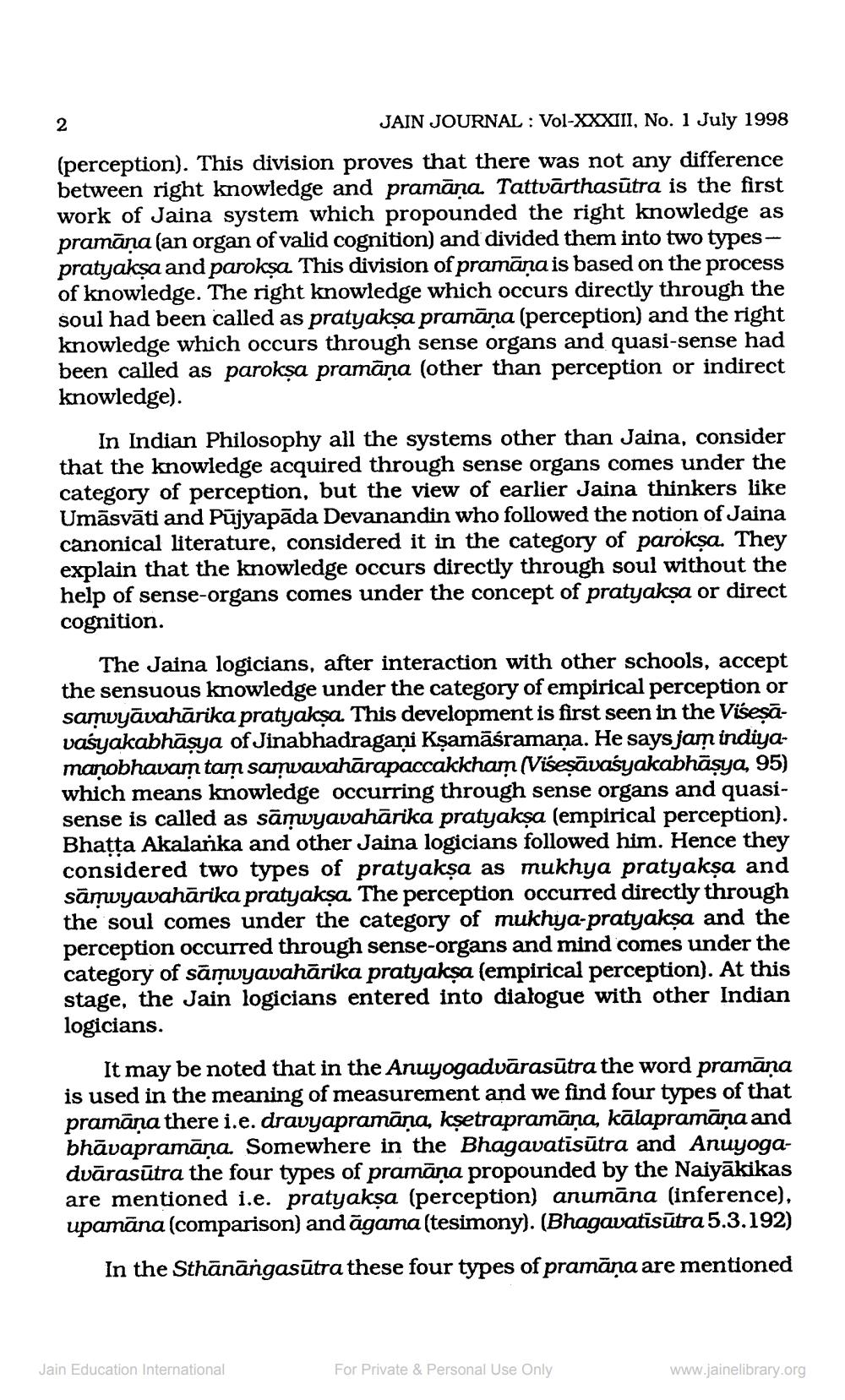________________
JAIN JOURNAL: Vol-XXXIII, No. 1 July 1998 (perception). This division proves that there was not any difference between right knowledge and pramāņa. Tattvārthasūtra is the first work of Jaina system which propounded the right knowledge as pramāna (an organ of valid cognition) and divided them into two typespratyakṣa and parokṣa. This division of pramāna is based on the process of knowledge. The right knowledge which occurs directly through the soul had been called as pratyakṣa pramāņa (perception) and the right knowledge which occurs through sense organs and quasi-sense had been called as parokṣa pramāņa (other than perception or indirect knowledge).
2
In Indian Philosophy all the systems other than Jaina, consider that the knowledge acquired through sense organs comes under the category of perception, but the view of earlier Jaina thinkers like Umāsvāti and Pujyapāda Devanandin who followed the notion of Jaina canonical literature, considered it in the category of parokṣa. They explain that the knowledge occurs directly through soul without the help of sense-organs comes under the concept of pratyakṣa or direct cognition.
The Jaina logicians, after interaction with other schools, accept the sensuous knowledge under the category of empirical perception or samvyāvahārika pratyakṣa. This development is first seen in the Viseṣāvasyakabhāṣya of Jinabhadragani Kṣamāśramaņa. He says jam indiyamanobhavam tam samvavaharapaccakkham (Viseṣāvasyakabhāṣya, 95) which means knowledge occurring through sense organs and quasisense is called as sāmvyavahārika pratyakṣa (empirical perception). Bhaṭṭa Akalanka and other Jaina logicians followed him. Hence they considered two types of pratyakṣa as mukhya pratyakṣa and sāmvyavahārika pratyakṣa. The perception occurred directly through the soul comes under the category of mukhya-pratyakṣa and the perception occurred through sense-organs and mind comes under the category of sāmvyavahārika pratyakṣa (empirical perception). At this stage, the Jain logicians entered into dialogue with other Indian logicians.
It may be noted that in the Anuyogadvārasūtra the word pramāņa is used in the meaning of measurement and we find four types of that pramāņa there i.e. dravyapramāņa, kṣetrapramāņa, kālapramāņa and bhāvapramāṇa. Somewhere in the Bhagavatīsūtra and Anuyogadvārasūtra the four types of pramāņa propounded by the Naiyākikas are mentioned i.e. pratyakṣa (perception) anumāna (inference), upamāna (comparison) and agama (tesimony). (Bhagavatisūtra 5.3.192)
In the Sthānangasūtra these four types of pramāņa are mentioned
Jain Education International
For Private & Personal Use Only
www.jainelibrary.org




